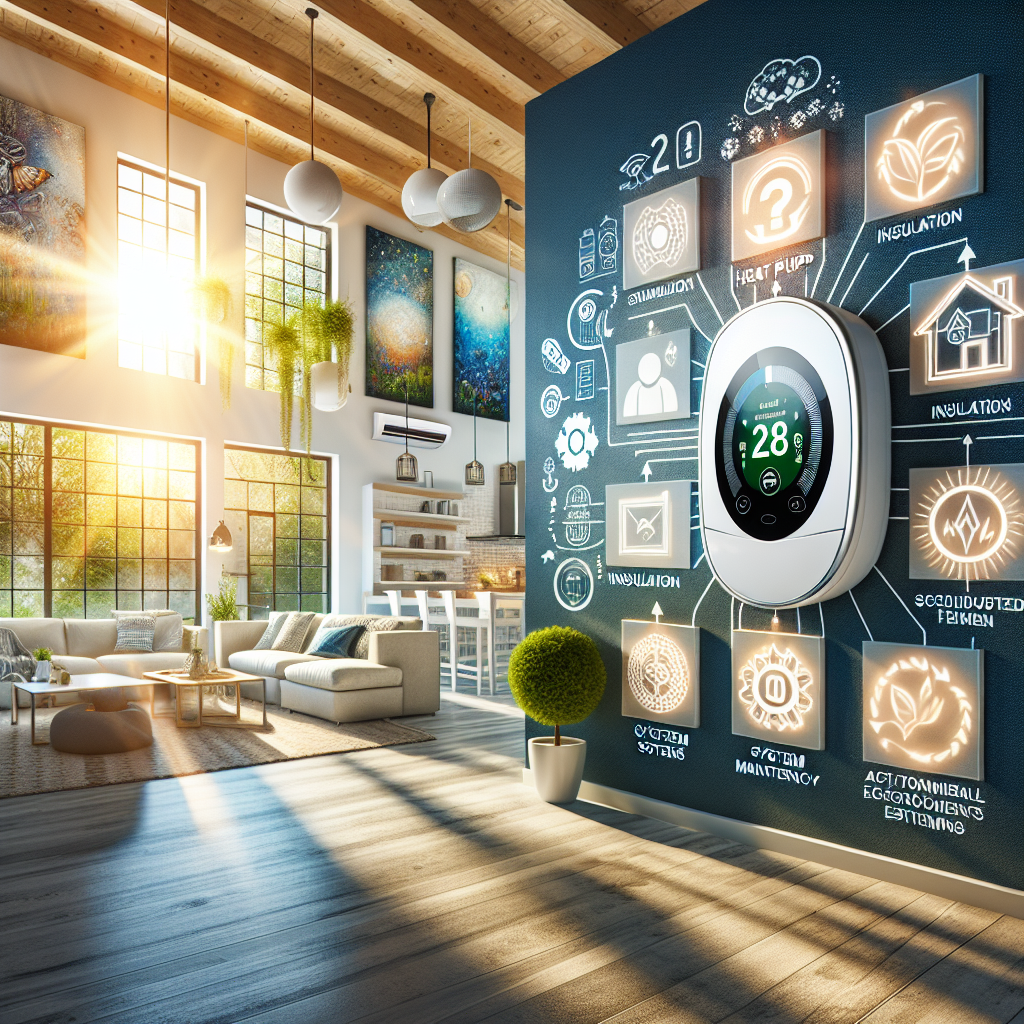In today’s world, energy efficiency isn’t just a buzzword; it’s a lifestyle choice that impacts our wallets and our environment. With rising energy costs and increasing awareness of climate change, optimizing your home’s heating and cooling systems can save you money while making your home more comfortable. Here are 10 simple ways to maximize energy efficiency in your heating and cooling systems.
1. Regular Maintenance is Key
Just like your car needs regular oil changes, your HVAC system requires consistent maintenance. Schedule an annual inspection with a certified technician to ensure that your heating and cooling systems are running efficiently. During this inspection, technicians can clean the coils, check the refrigerant levels, and replace filters—all critical for ensuring optimal performance.
Why It Matters
Regular maintenance not only extends the life of your HVAC system but also prevents unexpected breakdowns and costly repairs. Plus, a well-maintained system operates more efficiently, helping you save on energy bills.
2. Seal Leaks and Insulate Ducts
Did you know that up to 30% of heated or cooled air can escape through leaks in your ductwork? Sealing these leaks and adding insulation can dramatically increase energy efficiency in your home.
How to Get Started
- Inspect your ducts for visible holes and use duct tape or mastic to seal minor leaks.
- Consider hiring a professional to conduct a blower door test to identify and seal any hidden leaks.
3. Upgrade to Smart Thermostats
If you haven’t made the switch to a smart thermostat yet, now’s the time. Smart thermostats learn your habits and adjust the temperature accordingly, ensuring that energy isn’t wasted when you’re not home.
Benefits of Going Smart
- Many models allow for remote control via a smartphone app.
- They can show you energy usage stats and provide suggestions for energy savings.
4. Select Energy-Efficient Equipment
When it’s time to replace your HVAC system or appliances, consider investing in energy-efficient models. Look for products labeled with ENERGY STAR certification, which guarantees that they meet strict energy efficiency guidelines.
Long-Term Savings
Though energy-efficient models may come with a higher upfront cost, they save you money over time through lower utility bills and potential rebates from utility companies.
5. Utilize Ceiling Fans
Ceiling fans can be a game changer in both heating and cooling your home. By running them in the clockwise direction during winter and counterclockwise in summer, you can distribute heated or cooled air effectively.
Energy-Saving Tip
Using ceiling fans allows you to raise or lower the thermostat by a few degrees, creating extra savings without sacrificing comfort.
6. Control Sunlight with Window Treatments
Windows can be a major source of energy loss—up to 30%—so controlling the sunlight that enters your home is essential. Use energy-efficient window treatments such as blinds, curtains, or shades to reduce heat gain during summer and heat loss in winter.
Additional Options
Consider UV-blocking window films or storm windows to further improve energy efficiency.
7. Set Your Thermostat Smartly
Every degree counts when it comes to your thermostat settings. A slight adjustment can lead to significant savings. The Department of Energy recommends setting your thermostat to 68°F in the winter and 78°F in the summer.
Consistency is Key
Embrace temperature consistency throughout the day, possibly lowering the temperature at night or when you’re away for long periods.
8. Invest in High-Quality Insulation
Proper insulation is crucial for energy efficiency. Insulating your walls, roof, and attic can dramatically reduce the workload on your HVAC systems.
Getting Started
Consider a professional energy audit to determine where your home can be better insulated. Investing in insulation may seem costly initially, but it pays off with lower heating and cooling bills.
9. Mind Your Ventilation
airflow in your home is crucial for maintaining comfort and optimizing energy efficiency. Ensure vents are not blocked and that air can flow freely throughout your home.
Quick Fixes
- Regularly check and clean air filters.
- Ensure furniture or drapes are not obstructing vents.
10. Utilize Natural Ventilation
On milder days, take advantage of natural ventilation. Open windows during cool evenings or mornings to allow fresh air to circulate and cool your home without the use of conditioning systems.
Fresh Air Benefits
Natural ventilation not only saves energy but also improves indoor air quality—creating a healthier living environment for you and your family.
Conclusion: Embrace Energy Efficiency
Implementing these 10 simple strategies can vastly improve your home’s energy efficiency while saving you money. Each small change can contribute to a larger impact, leading to lower bills and a more great comfort in your home. Together, we can take steps towards a more sustainable future—one energy-efficient home at a time.
Make these changes today and watch your energy consumption decrease while your comfort levels soar!


